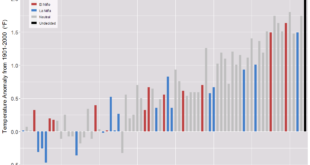 The OECD has resources related to antimicrobial resistance (AMR). A summary can be read in the article Stopping antimicrobial resistance would cost just USD 2 per person a year (7/11/18), which included the chart copied here. The article is rich with quantitative information.
The OECD has resources related to antimicrobial resistance (AMR). A summary can be read in the article Stopping antimicrobial resistance would cost just USD 2 per person a year (7/11/18), which included the chart copied here. The article is rich with quantitative information.
While resistance proportions for eight high-priority antibiotic-bacterium combinations increased from 14% in 2005 to 17% in 2015 across OECD countries, there were pronounced differences between countries. The average resistance proportions in Turkey, Korea and Greece (about 35%) were seven times higher than in Iceland, Netherlands and Norway, the countries with the lowest proportions (about 5%).
Resistance is already high and projected to grow even more rapidly in low and middle-income countries. In Brazil, Indonesia and Russia, for example, between 40% and 60% of infections are already resistant, compared to an average of 17% in OECD countries. In these countries, growth of AMR rates is forecast to be 4 to 7 times higher than in OECD countries between now and 2050.
The full report is available: Stemming the Superbug Tide Just A Few Dollars More. Two other pages have graphs. The Nov 11 post under the same title, Stemming the Superbug Tide Just A Few Dollars More, includes a map and two sets of graph with AMR trends by countries. On another page,
